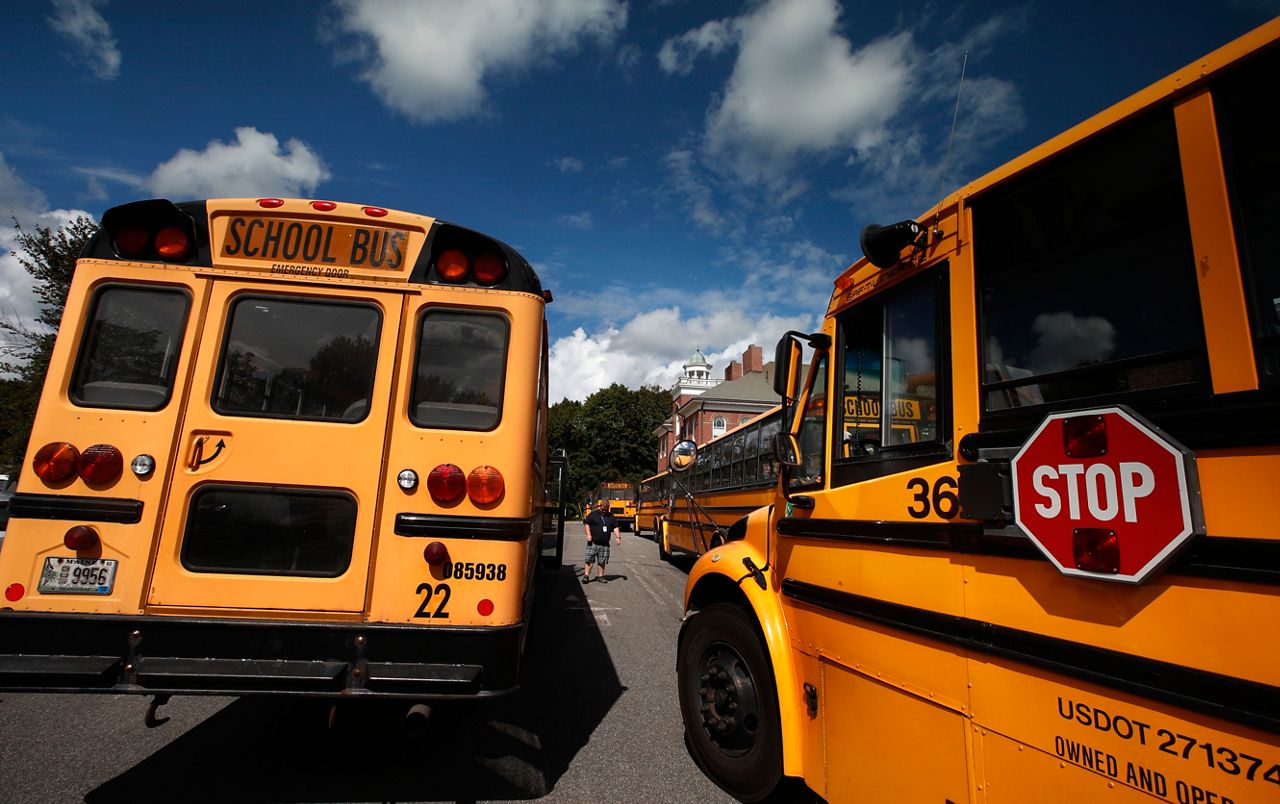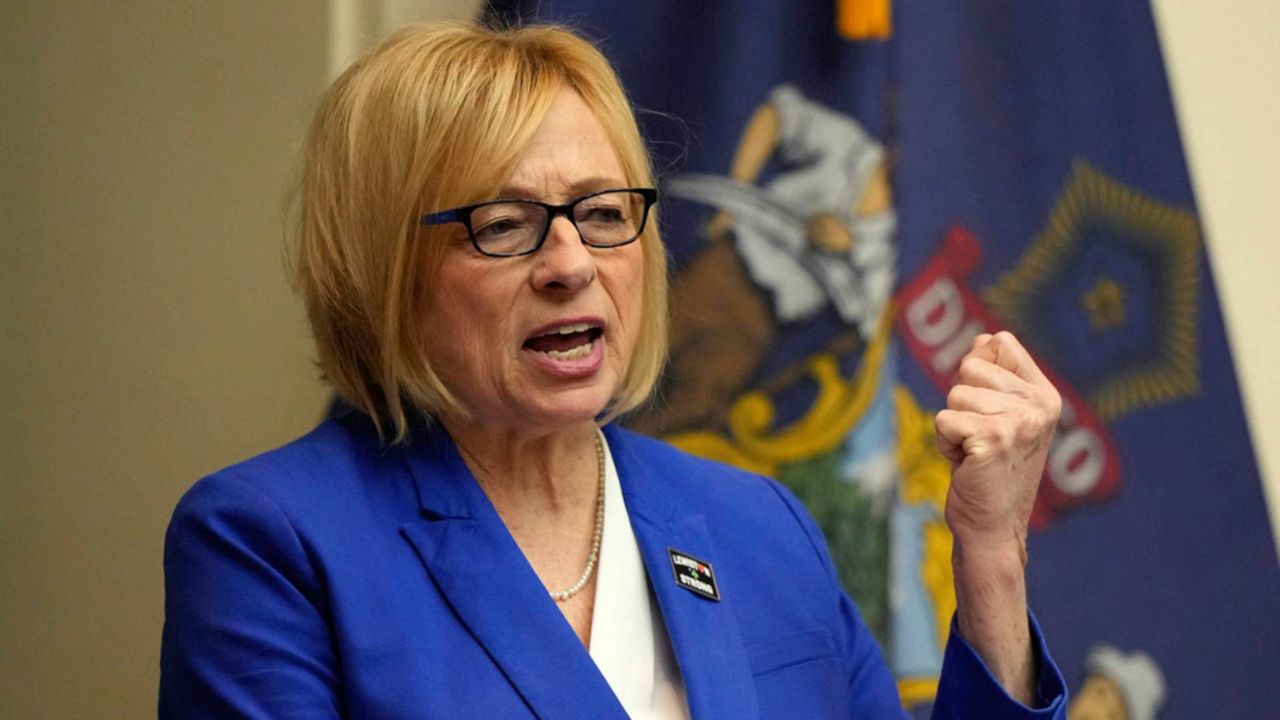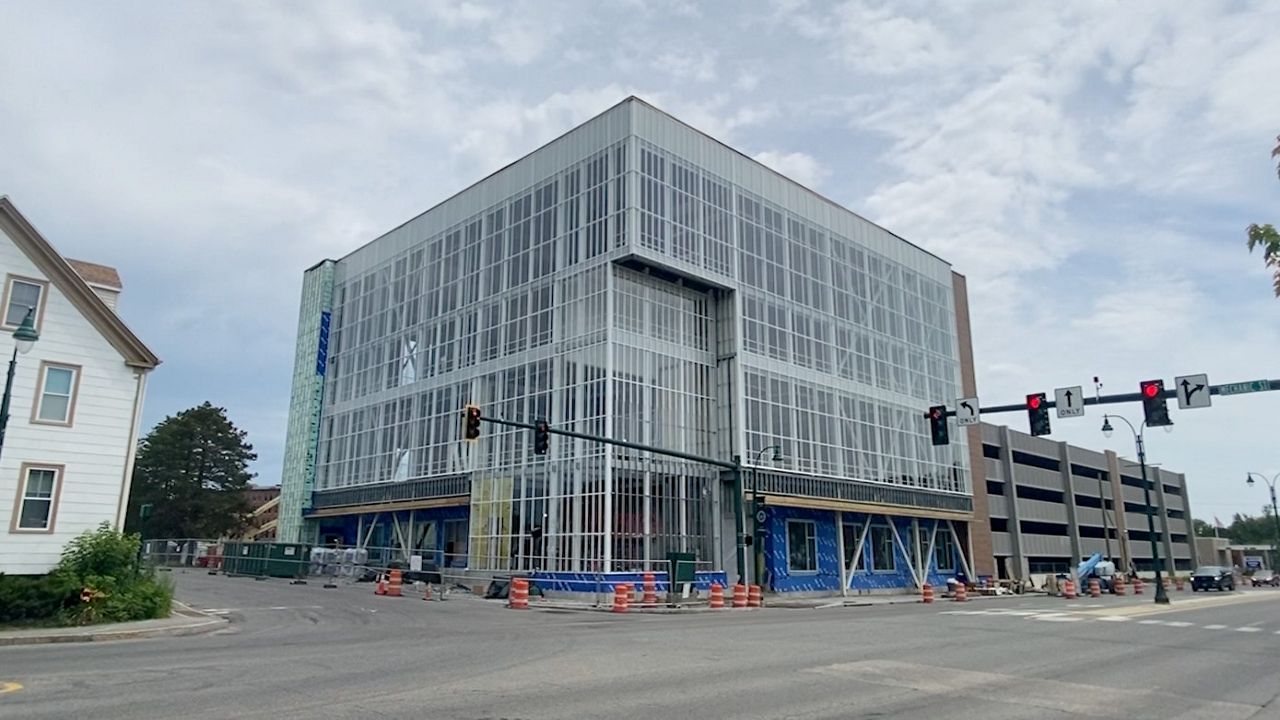Lewiston School Superintendent Jake Langlais understands the ongoing school bus driver shortage all too well.
Just last month, he said, his district was down 19 drivers. This week, he said, the district had hired enough help to whittle that deficit down to three.
“It’s getting better, but we’re still short,” he said, noting that the district still needed backup drivers and drivers for sporting events and other after-school activities.
“Any kind of anomaly is a major disruption,” he said.
Langlais is not alone. The number of drivers has been declining for years and the pandemic made the problem worse. Now, with school openings just weeks away, districts throughout Maine are barely able to fill the ranks.
“There’s just no drivers,” Langlais said.
Statewide data on bus drivers is difficult to come by. Maine School Superintendents Association Director Eileen King said she had an informal list of Maine districts that had reported minor shortages – meaning five openings or less.
There were about six districts, however, that had higher numbers of vacancies, including Lewiston, she said.
“It’s a widespread concern right now,” Langlais said. “There are some districts where it’s a significant problem.”
In York County, Sanford’s school district had some driver shortages last year. Currently, the district is down five drivers and three bus monitors, about 20% below the total number they need for normal service, according to Assistant Superintendent Steve Bussiere.
“We are struggling with drivers,” he said.
RSU14, which serves Windham and Raymond, is facing similar difficulties. Superintendent Christopher Howell said he would like to see about 25 regular bus drivers and 24 van drivers, but the district is down two people. The district expects one more new driver to start next week, but that means there still won’t be quite enough drivers.
The problem isn’t as severe in some larger districts. Portland School Department spokesperson Tess Nacelewicz said there are two full-time and one part-time positions still to be filled, but she said the district was hiring new drivers and a shortage wasn’t anticipated.
Bangor also faced shortages last year, but appeared able to cope.
“They did have some staffing shortages, but it didn’t impact our day-to-day activities,” said Ray Phinney, the district’s school safety and communications director. He expects the situation to improve this year.
Even having a full roster of drivers can leave a district wanting.
Howell said ideally he’d like to have backup drivers to turn to, which he doesn’t have right now.
“I can remember some days last year when you had two people going home because of COVID, and having to find other people to come in,” he said. “There really wasn’t a deep bench you could go to for help.”
Phinney recalled the same problem last year in Bangor, when drivers would be forced to quarantine if they had been in close contact with someone who tested positive for the coronavirus.
“Everyone in the bus garage was considered a close contact,” Phinney said.
What’s causing the current shortage is unclear.
“This was not a problem that was created by COVID,” Howell said. “This was a problem that was beginning before COVID. COVID just exacerbated it.”
King said one factor may be the length and complexity of bus driver certifications. She noted that state and federal regulators had relaxed certain requirements, but it still takes between six and eight months to get certified to drive a school bus in Maine.
For many applicants, she said, that’s too long to wait.
“Certainly we don’t want to cut corners, but to get the driver’s license, does it need to take that long?” she said.
Bussiere noted that the work schedule is also demanding.
Drivers must be available first thing in the morning and during the afternoons, with a large gap of idle time in between. Meanwhile, there is little to no work available in the summertime.
“The schedule of a bus driver, you have to have the right person,” he said.
Many districts have been forced to come up with new ways to make up the losses. King said some are doubling up runs, tweaking the start and end times of the school day, anything that will help.
“They’re getting creaive with how we pick our kids up,” she said.
During the previous school year In Windham, Howell said he dipped into an unofficial pool of trained drivers. That included those who normally work as mechanics in the garage, a route coordinator and the administrative assistant in the transportation office.
Even then, Howell said, the district couldn’t keep all the buses running.
“We had to cancel a run and we had to do some run juggling because we were short on drivers,” he said.
On at least three or four occasions, Howell said, some parents were asked to find other ways to get their kids to school. For those who couldn’t, the district was forced to grant excused absences.
In Sanford, Bussiere said the district has had to combine routes, and is now weighing the potential impacts on after-school activities.
“To say the least, it’s a little bit of a challenge,” he said.
Langlais said his district has also been forced to combine separate bus runs together, but he expects the upcoming school year will still be challenging.
“I think it’s going to be a moving target, day to day,” he said.









